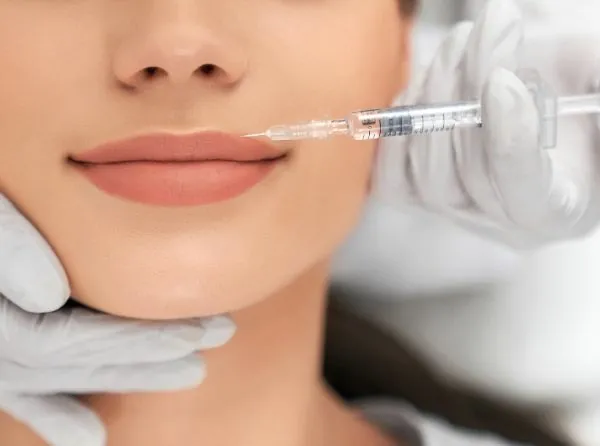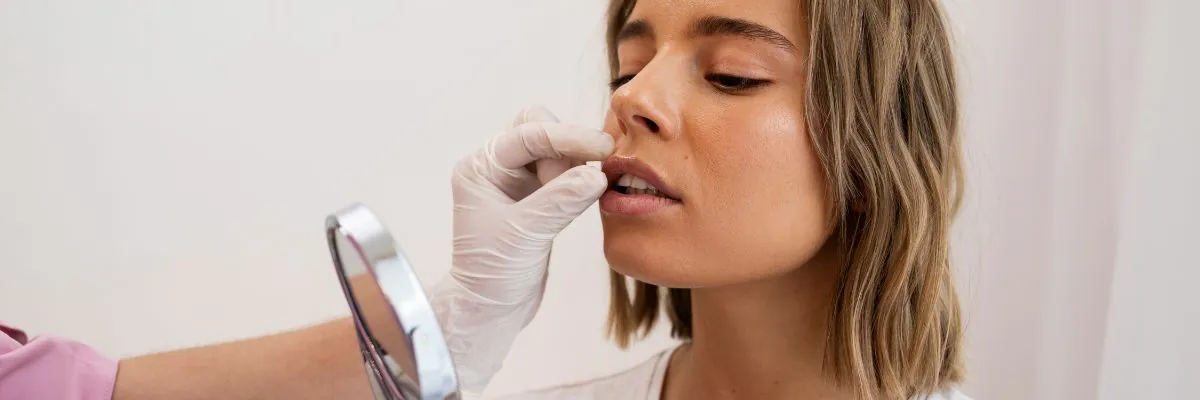Lip fillers have become a popular cosmetic procedure in recent years, offering individuals a way to enhance the appearance of their lips. However, it’s important to understand the aftercare process in order to ensure optimal results and minimise any potential risks.
In this article, we will explore the world of lip fillers, covering an overview of the procedure, the advantages they offer, potential risks, immediate post-treatment care, and long-term maintenance strategies.
Before your procedure
It is important that you read all the information you will be sent, including the consent form, prior to your appointment. There, you will find all the advice and what to expect, the dos and don’ts.
Additionally, it’s also very important to avoid using certain products, such as blood-thinning medications and facial scrubs, as they may increase bruising and alter the outcomes of the filler. Please make sure you inform your doctor of any medication you may be taking well in advance (by filling the pre-consultation form).Avoid alcohol for at least 24 hours before the procedure to minimise the risk of bruising.

Top lip filler aftercare instructions
Aftercare of lip fillers is crucial for optimal healing and maintaining the best possible results, with specific guidelines for both immediate and long-term care.
Immediate aftercare
Immediately after receiving lip fillers, it’s common to experience some swelling and bruising around the injected area. This is completely normal and typically subsides within a few days. The best lip augmentation aftercare is to follow these few tips:
- Stay hydrated: Drinking plenty of water is essential for maintaining good skin health, and it’s especially important after getting lip fillers. Staying hydrated will help speed up the healing process and reduce any swelling.
- Avoid strenuous exercise: It’s best to avoid strenuous exercise for the first 24 hours after getting lip fillers. Exercise increases blood flow to the face and can exacerbate the swelling process. Instead, focus on light activities like walking or yoga.
- Avoid makeup: It’s best to avoid applying makeup to the lips for the first 24 hours after getting lip fillers. Makeup can interfere with the natural healing process, introduce infection and may prolong the swelling.
- Use a gentle lip balm: Using a gentle lip balm can help moisturise and protect the lips during the recovery process. Look for a lip balm that’s specifically formulated for sensitive lips and avoid products with fragrances or harsh chemicals that may irritate the skin. Simple Vaseline works wonderfully.
- Avoid extreme temperatures: Avoid extreme heat or cold for the first 48 hours after getting lip fillers. This includes hot showers, saunas, and excessive sun exposure. These extreme temperatures can exacerbate the swelling.
- Avoid alcohol for at least 24 hours post procedure to minimise the risk of bruising.
Long-term aftercare
Once the swelling and bruising have subsided, it’s important to maintain the results of the lip fillers by following a long-term after care for lip injections. Here are some tips to help you maintain your results:
- Avoid excessive sun exposure: Prolonged exposure to the sun can damage the skin around the lips and cause the fillers to fade prematurely. Apply sunscreen to the lips when outdoors and avoid direct sun exposure when possible.
- Avoid smoking: Smoking can break down the collagen and elastin in the skin, leading to premature filler breakdown. It’s best to quit smoking altogether to ensure that the results from your lip fillers last longer.3. After one month, it’s recommended to schedule a follow-up appointment with your doctor to assess your results and discuss any further necessary aftercare. At this appointment, your doctor can give you personalised advice on maintaining your results and ensuring the longevity of your lip filler treatment.

Potential lip filler side effects
In this section, we will delve into the potential risks and complications associated with lip fillers and provide guidance on when to seek medical help.
- Allergic reaction: Allergic reactions to lip fillers are rare, but they can happen. Symptoms of an allergic reaction may include swelling, itching, hives, or difficulty breathing. If you experience any of these symptoms, it is advisable to seek immediate medical attention.
- Lumpiness or discomfort: After receiving lip fillers, it is normal to experience some swelling and bruising. However, if you notice lumps or discomfort in the treated area, it is important to seek medical attention. These symptoms may indicate an infection or other complication that requires immediate attention.
- Pain or swelling in the surrounding area : Sometimes, complications with lip fillers can arise due to swelling or pain in the surrounding area. If you experience pain or swelling outside of your lips, it is advisable to seek medical advice.
- Skin necrosis: Skin necrosis, also known as skin death, is a rare but serious complication that can occur due to lip fillers. It occurs when an area of skin dies due to inadequate blood flow. If you notice any signs of skin discoloration, blisters, or wounds in the treated area, it is crucial to seek medical attention immediately.
Overall, lip enhancement aftercare is an essential step in ensuring optimal results. By following the immediate and long-term aftercare tips provided, you can minimise any risks and prolong the positive effects of your lip fillers. Remember to consult with your dermatologist or aesthetic practitioner for any specific concerns and recommendations.



